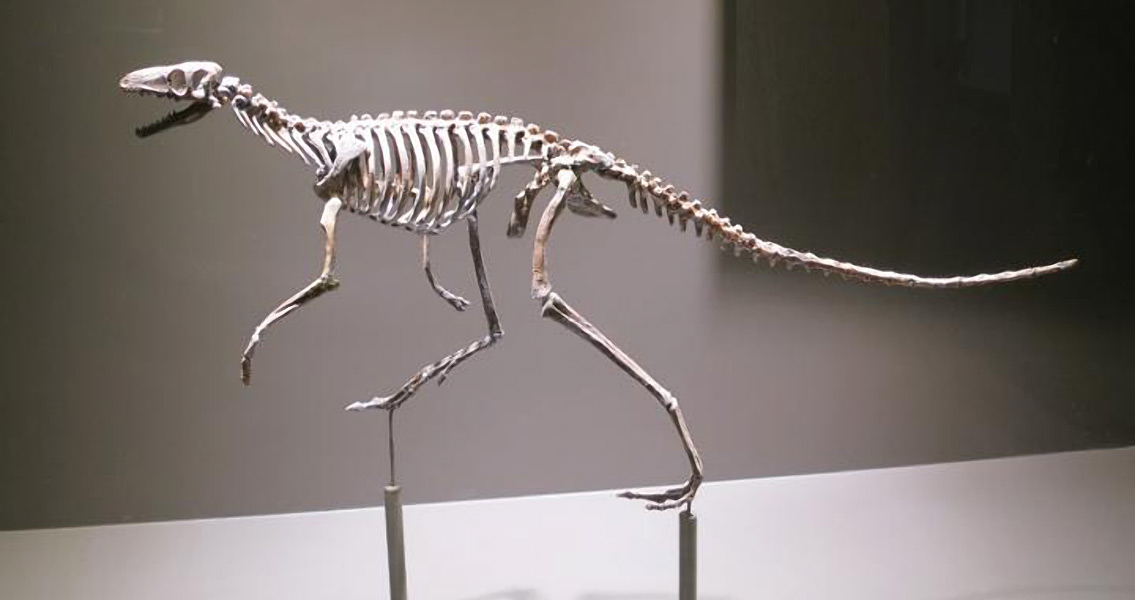<![CDATA[Researchers from the University of Alberta recently unveiled a new theory on bipedal development in dinosaurs, paving new explanations for the move from four-footed ancient animals to two-legged ones. According to a press release from the university, the new theory states that walking on two legs was a trait inherited from dinosaurs’ ancient ancestors, namely smaller proto-dinosaurs. The trick, according to Scott Persons, the lead author of the new paper detailing the theory, has everything to do with the tails of these creatures. Persons, a postdoctoral fellow at the university, says that these proto-dinosaurs had massive, leg powering muscles in their tails, and this muscle mass allowed early dinosaurs to stand and move around on their two back feet. There’s a similar effect observable in many modern lizards, the paleontologist added, especially those that have the ability to rise up on their back legs for bipedal locomotion. As proto-dinosaurs continued to evolve, their ability to walk on their back legs improved, making it easier for them to run faster and over longer distances. Evolutionary advances like smaller forelimbs improved balance and reduced body weight, while elongated hind limbs made it easier for these dinosaurs to run faster, according to this new theory. Persons says that the new bipedal development model clearly refutes existing theories of early proto-dinosaur development – namely, that these animals used their back legs in order to free their forelimbs to catch prey. The researcher said that too many ancient bipedal dinosaurs wouldn’t have needed the ability on account of being herbivores; additionally, small forearms are a common trait in even early carnivorous dinosaurs. It’s far more likely these predators used their powerful jaws to grapple with prey instead of using their ineffective forelimbs. The researchers even went on to explain why some of the fastest animals alive today, such as cheetahs and horses, are four-footed and not bipedal. The secret, again, is in the tail muscles; proto-mammal ancestors adapted to live without such musculature more than 252 million years ago in the Permian period, according to the fossil record. Mammals and proto-mammals were undergoing other evolutionary adaptations during that time – namely to live underground and to dig their own burrows. These activities needed strong front limbs in order to dig these holes; having heavily-muscled hindquarters and tails might have been a liability to creatures that had to navigate narrow, twisting warrens to escape predators. Modern burrowers back up this, according to Persons. Animals such as moles, badgers, and rabbits all have short tails, which might have been an adaptation designed to make it as difficult as possible for predators to reach in and grab a fleeing mammalian burrower. Living underground may have played a role in surviving the Permian’s mass-extinction event as well, researchers theorize. Once these proto-mammals crawled back out and moved into the open in a world suddenly bereft of their bigger, meaner reptile predators, they were able to evolve and adapt – and without strong tail muscles, even the fastest of these creatures would have evolved to keep four on the floor. The new research study, which was published in The Journal of Theoretical Biology, can be found here Image courtesy of Scott Persons]]>
New Theory on Bipedal Development in Dinosaurs Unveiled
